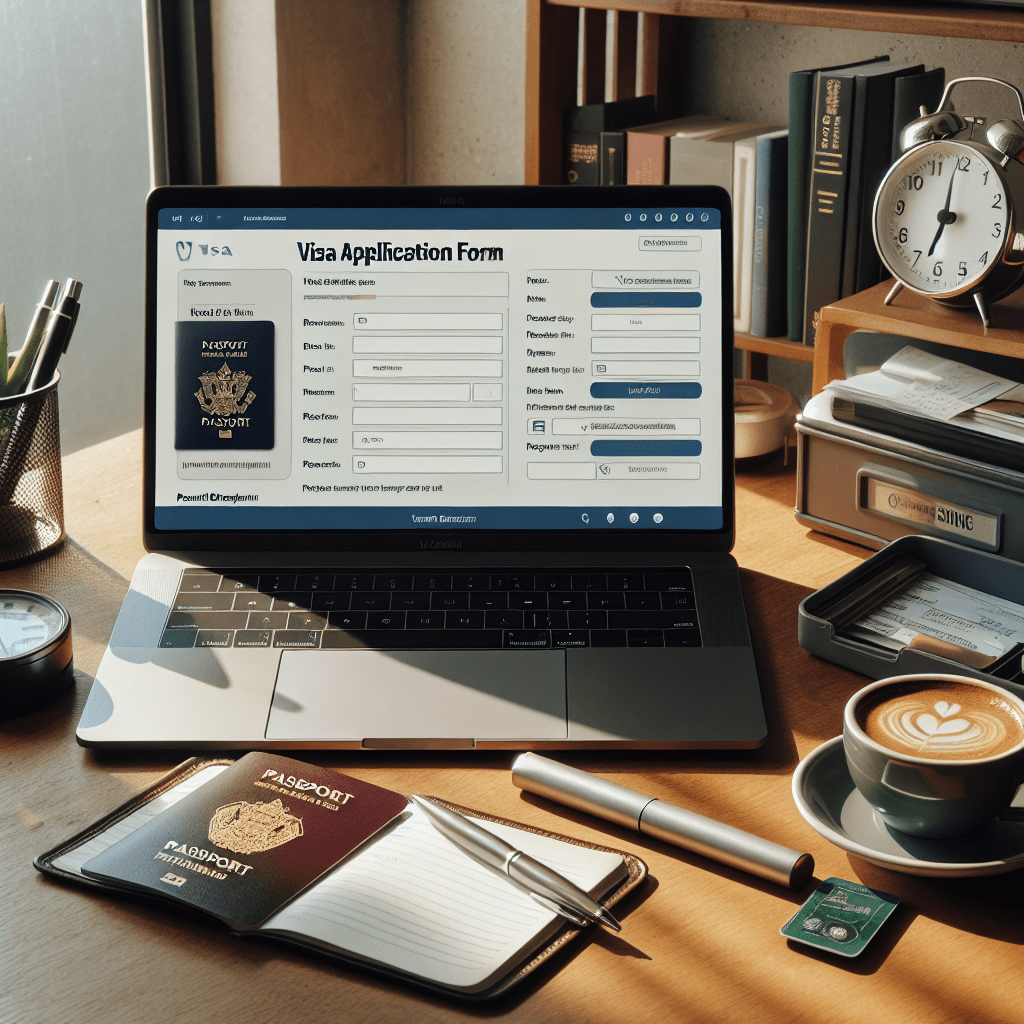When should I apply for an e-visa for my 2025 travel plans?

Planning ahead for international travel in 2025 is more crucial than ever, especially with the increasing reliance on digital solutions like e-visas. As global travel continues to evolve, understanding the significance of electronic travel authorization becomes essential for a seamless journey. E-visas offer a convenient and efficient way to obtain the necessary travel documents, eliminating the need for traditional paper-based applications. This shift towards digital travel authorization reflects the broader trend of modernization in the travel industry.
Several factors influence the timing of your e-visa application, including the specific requirements of your destination country, the processing time for electronic visas, and the peak travel seasons. Applying for an e-visa 2025 well in advance ensures that you have ample time to address any potential issues that may arise during the application process. By understanding these factors, travelers can better plan their trips and avoid last-minute complications. As you prepare for your 2025 travel plans, being informed about the e-visa process and its timelines will help you navigate the complexities of international travel with confidence.

Understanding e-visa processing times
Examining typical processing timelines
When planning for international travel in 2025, understanding the typical processing timelines for e-visas is essential. The standard processing periods for e-visas can vary significantly depending on the destination. For many popular travel destinations, the electronic visa process can take anywhere from a few days to several weeks. For instance, countries with a high volume of tourists, such as Australia and India, often have streamlined systems that allow for quicker processing times, typically ranging from 48 hours to a week.
However, several factors can lead to variations in processing times. These include the complexity of the e-visa eligibility criteria, the thoroughness of the background checks required, and the efficiency of the visa application portal used by the destination country. Additionally, the time of year can also impact processing times, as certain periods may see a surge in applications, leading to potential delays. Understanding these factors can help travelers better plan their application timelines and avoid unnecessary stress.
Assessing the impact of peak travel seasons
Peak travel seasons can significantly impact the processing times for e-visas. During these periods, the demand for digital travel authorization increases, which can lead to longer wait times for approval. For example, summer months and major holiday seasons often see a spike in travel, resulting in a higher volume of e-visa applications. This increased demand can strain the resources of visa processing centers, leading to potential delays in the issuance of travel documents.
To mitigate delays during high-demand periods, travelers are advised to apply for their e-visas well in advance. Submitting an online visa application early can help ensure that there is ample time to address any unforeseen issues that may arise. Additionally, staying informed about the specific e-visa processing time for your destination and monitoring any updates from the relevant authorities can help you plan more effectively. By taking these proactive steps, travelers can reduce the risk of encountering delays and ensure a smoother travel experience.
Considering the differences in processing times by country
Processing times for e-visas can vary widely from one country to another, and understanding these discrepancies is crucial for travelers planning to visit multiple destinations. Some countries have invested heavily in their virtual visa systems, resulting in faster processing times. For instance, countries in the European Union often have efficient systems in place, allowing for quicker turnaround times for electronic travel permits.
On the other hand, some countries may have more stringent future visa requirements, leading to longer processing times. These countries may require additional documentation or more comprehensive background checks, which can extend the time needed to obtain an e-visa. Travelers should be aware of these special considerations when applying for e-visas to multiple destinations, as the processing times can vary significantly.
To navigate these differences effectively, it is advisable to research the specific requirements and processing times for each country on your itinerary. Utilizing online visa services can also provide valuable insights and assistance in managing multiple applications. By understanding the nuances of e-visa processing times across different countries, travelers can better plan their journeys and ensure that they have the necessary travel documents in hand well before their departure dates.

Key factors to consider when choosing application timing
Reviewing personal travel schedules and commitments
When planning for your 2025 travel, aligning your e-visa application with your personal travel schedule is crucial. The timing of your online visa application should be carefully coordinated with your booked travel arrangements to ensure a seamless journey. This involves considering the e-visa processing time and ensuring that your digital travel authorization is approved well before your departure date. By doing so, you can avoid last-minute stress and potential disruptions to your travel plans.
Flexibility in your travel plans can also be beneficial when dealing with e-visa applications. While it is important to have a clear itinerary, being open to adjustments can help accommodate any unexpected delays in the visa approval process. For instance, if your e-visa approval status is pending, having a buffer period before your intended travel date can provide peace of mind. This flexibility allows you to make necessary changes without compromising your overall travel experience.
Evaluating the validity period of specific e-visas
Understanding the validity period of your e-visa is another key factor in determining the timing of your application. Each e-visa comes with specific start dates and expiration periods, which dictate the timeframe within which you can enter and stay in the destination country. It is essential to familiarize yourself with these details to maximize your travel time and avoid any issues at the border.
When planning your travel document 2025, consider how the e-visa’s validity aligns with your travel itinerary. For example, if your e-visa is valid for 90 days from the date of issue, you should plan your entry and exit dates accordingly. This ensures that you can make the most of your time in the destination country without overstaying your visa. Additionally, understanding the future visa requirements for your chosen destination can help you plan more effectively and avoid any potential complications.
Balancing early applications with potential changes in plans
Applying for an e-visa well in advance has its advantages, but it also comes with certain risks. One of the primary benefits of early application is the assurance that your electronic travel permit will be ready in time for your trip. This proactive approach can help you avoid the stress of last-minute applications and potential delays. However, it is important to balance this with the possibility of changes in your travel plans.
Travel itineraries can change due to various factors, such as personal commitments, changes in flight schedules, or unforeseen circumstances. If you apply for an e-visa too early, you may face challenges if your plans change significantly. In such cases, it is important to understand the policies regarding e-visa application fees and amendments. Some countries may allow for changes to be made to your e-visa, while others may require a new application altogether.
To handle sudden changes in travel itineraries, it is advisable to stay informed about the e-visa approval status and any updates from the relevant authorities. Utilizing online visa services can also provide valuable support in managing changes to your application. By carefully considering the timing of your e-visa application and being prepared for potential changes, you can ensure a smooth and hassle-free travel experience.

Best practices for a seamless e-visa application
Gathering necessary documentation ahead of time
One of the most effective strategies for ensuring a smooth e-visa application process is to gather all necessary documentation well in advance. Identifying the common documentation required for your online visa application is the first step. Typically, this includes a valid passport, recent passport-sized photographs, proof of travel arrangements, and any additional documents specified by the destination country’s e-visa eligibility criteria. Having these documents ready can significantly expedite the electronic visa process.
It is also important to keep your documents updated and readily available. For instance, ensure that your passport is valid for at least six months beyond your intended stay, as this is a common requirement for many countries. Additionally, having digital copies of your documents can be beneficial, as many visa application portals require electronic submissions. By organizing your documentation ahead of time, you can avoid unnecessary delays and ensure that your application is processed efficiently.
Staying informed about changes in visa regulations
Visa regulations can change frequently, and staying informed about these changes is crucial for a successful e-visa application. Monitoring updates and advisories from government websites and embassies can provide valuable insights into any changes in future visa requirements or digital travel authorization processes. This information can help you adjust your application strategy accordingly and ensure compliance with the latest regulations.
Utilizing reliable resources for accurate visa information is also essential. Official government websites, reputable travel advisory services, and trusted online visa services can provide up-to-date information on visa requirements and application procedures. By staying informed, you can avoid potential pitfalls and ensure that your application meets all necessary criteria. This proactive approach can help you navigate the complexities of the e-visa system and increase your chances of a successful application.
Seeking assistance when needed
Applying for an e-visa can sometimes be a complex process, and seeking assistance when needed can be highly beneficial. Consulting visa experts or agencies can provide valuable guidance and support throughout the application process. These professionals are well-versed in the intricacies of the virtual visa system and can offer personalized advice based on your specific travel needs. They can also assist with any issues related to the e-visa application fee or e-visa approval status, ensuring a smoother experience.
In addition to professional assistance, utilizing online guides and resources can also be helpful. Many websites offer step-by-step instructions and tips for completing your e-visa application, making it easier to navigate the process independently. These resources can provide clarity on common questions and help you avoid common mistakes that could delay your application. By leveraging the available support and resources, you can enhance your understanding of the e-visa process and increase your chances of a successful application.

Conclusion
Strategic planning in e-visa applications offers numerous benefits, ensuring a smoother and more efficient travel experience. By understanding the intricacies of the electronic visa process and aligning application timelines with personal travel schedules, travelers can avoid unnecessary stress and potential disruptions. The importance of gathering necessary documentation ahead of time cannot be overstated, as it allows for a more streamlined application process. Additionally, staying informed about changes in visa regulations and utilizing reliable resources can help travelers navigate the complexities of the virtual visa system with confidence.
Proactive planning also involves evaluating the validity period of specific e-visas and balancing early applications with potential changes in travel plans. By considering these factors, travelers can maximize their travel time and ensure compliance with future visa requirements. The benefits of strategic planning extend beyond the application process, as it allows travelers to focus on enjoying their journey rather than dealing with last-minute complications. Ultimately, a well-planned e-visa application can enhance the overall travel experience, providing peace of mind and allowing for a more enjoyable adventure.
As travelers prepare for their 2025 journeys, staying proactive and informed is key to a successful travel experience. The landscape of international travel is constantly evolving, and being aware of the latest developments in digital travel authorization is essential. By monitoring updates from government and embassy sources, travelers can ensure that they are well-prepared for any changes in future travel regulations. Additionally, seeking assistance from visa experts or utilizing online guides can provide valuable support and guidance throughout the application process.
Encouraging travelers to take a proactive approach to their e-visa applications not only increases the likelihood of a successful application but also contributes to a more enjoyable and stress-free travel experience. By staying informed and planning strategically, travelers can confidently embark on their 2025 adventures, knowing that they have taken the necessary steps to ensure a smooth journey. This proactive mindset will serve travelers well as they explore new destinations and create lasting memories in the years to come.